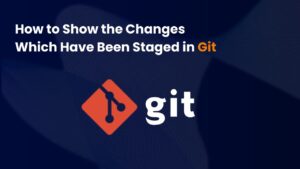Businesses can now effectively deploy, scale, and manage containerized apps thanks to Kubernetes, which has emerged as the de facto standard for container orchestration. Understanding the architecture of Kubernetes is essential for developers, DevOps engineers, and system administrators who want to leverage its full potential. This article explores the fundamental elements of Kubernetes architecture, breaking down its core components, their roles, and how they work together to manage modern cloud-native applications.
Introduction to Kubernetes
Originally created by Google, Kubernetes is an open-source platform that automates the deployment, scaling, and operation of application containers. It is now maintained by the Cloud Native Computing Foundation (CNCF). Its name is derived from the Greek word for “helmsman,” a fitting metaphor for steering complex, containerized applications across diverse infrastructures.
Kubernetes achieves this by organizing containers into logical units and providing APIs to control them. It may operate in hybrid settings, on-premises, or in the cloud, and is very adaptable.
High-Level Kubernetes Architecture
- At a high level, Kubernetes architecture consists of two main layers:
- Control Plane: Kubernetes’ brain, in charge of cluster status and global decisions.
- Worker Nodes—the machines (physical or virtual) that run the actual containerized applications.
- Each layer comprises several components that work together to orchestrate containers seamlessly.
DevOps Training in Pune provides a great environment to upskill these valuable skills.
1. Control Plane Components
The control plane is in charge of overseeing the Kubernetes cluster’s general condition. It makes decisions about scheduling, responds to cluster events, and ensures the desired state of the system.
Kube-API Server
- Role: The front end of the Kubernetes control plane.
- Functionality: Acts as the central access point for all REST operations used to manage the cluster.
- Interaction: All components interact with the API server either directly (through REST calls) or indirectly (via kubectl or controllers).
- Security: Implements authentication, authorization, and admission control mechanisms to safeguard cluster access.
etcd
- Role: The persistent backing store of Kubernetes.
- Functionality: Stores all cluster data in a distributed key-value store.
- Features:
- Highly available and consistent.
- Stores configuration data, secrets, service discovery info, and the state of the system.
- Consideration: Since etcd is critical for cluster operations, it is recommended to secure it using TLS and regularly back it up.
Kube-Scheduler
- Function: Assigns nodes to newly generated pods.
- Functionality: Watches for unscheduled pods and selects an appropriate node based on resource availability, policies, and constraints.
- Scheduling Criteria:
- Resource availability (CPU, memory)
- Affinity/anti-affinity rules
- Taints and tolerances
- Node selectors and topology
Kube-Controller-Manager
- Role: Runs controller processes that regulate the cluster state.
- Key Controllers:
- Node Controller: Manages node health.
- Replication Controller: Verifies that a predetermined number of pod clones are operational.
- Endpoints Controller: Maps services to pods.
- Service Account & Token Controllers: Manages default accounts and access tokens.
Cloud-Controller-Manager
- Role: Integrates Kubernetes with the underlying cloud provider.
- Functions:
- Oversees cloud-specific elements such as node instances, storage volumes, and load balancers.
- Enables the abstraction of cloud-specific logic from the core Kubernetes codebase.
2. Node Components
The worker computers that run containerized apps in a Kubernetes cluster are called nodes. The services required to run and administer pods are present on every node.
Kubelet
- Role: Node agent.
- Functionality:
- Receives pod specifications from the API server.
- Verifies that the containers listed in those specifications are operational and in good condition.
- Monitoring: Continuously reports node and pod health back to the control plane.
Kube-Proxy
- Role: Networking component on each node.
- Functionality:
- Keeps network rules up to date on nodes so that services and pods may communicate.
- Uses iptables, IPVS, or userspace modes to manage routing and load balancing.
- Benefit: Abstracts network complexity and supports seamless service discovery.
Container Runtime
- Role: Executes containers.
- Examples: Docker (deprecated in newer versions), containerd, and CRI-O.
- The Kubernetes Container Runtime Interface (CRI) must be implemented.
- Functionality:
- Pulls images from registries.
- Starts, stops, and manages the container lifecycle.
Kubernetes Objects
Kubernetes uses declarative configurations called objects to represent the desired state of the system.
Pod
- Definition: A single instance of an active process is represented by the smallest deployable unit in Kubernetes.
- Characteristics:
- Has the capacity to hold one or more containers.
- Allows containers to share storage and networking.
- Run as a unified team.
ReplicaSet
- Goal: Ensures that a predetermined quantity of pod duplicates are operational at all times.
- Functionality: Automatically creates or deletes pods to match the desired count.
Deployment
- Role: Declarative updates for pods and ReplicaSets.
- Features:
- Enables rolling updates and rollbacks.
- Simplifies version control and scaling.
StatefulSet
- Use Case: Stateful apps are deployed.
- Features:
- Every pod has a consistent identification and long-term storage.
- Scaling and deployment are planned.
DaemonSet
- Functionality: Ensures a copy of a pod runs on all (or some) nodes.
- As an illustration, run a monitoring agent or log collector on each node.
Job & CronJob
- Job: Creates pods to carry out batch processes and terminates them once complete.
- CronJob: Like a UNIX cron, it schedules jobs to execute on a regular basis.
4. Networking in Kubernetes
Networking in Kubernetes allows communication within the cluster and between external systems.
Cluster Networking
- Flat Network: Every pod gets its own IP address, and all pods can communicate without NAT.
- CNI Plugins: Kubernetes uses Container Network Interface plugins like Calico, Flannel, and Weave Net to implement network policies.
Services
- Goal: Make a group of pods available as a network service.
- Types:
- Internal communication inside the cluster is facilitated via ClusterIP.
- NodePort: Each node exposes a service on a static port.
- LoadBalancer: Connects to cloud service providers to make services publicly available.
- ExternalName: Assigns a DNS name to the service.
Ingress
- Functionality: Manages external access to services, typically HTTP/HTTPS.
- Components: Ingress resources and Ingress controller.
- Features:
- SSL termination
- Path-based routing
- Virtual hosting
5. Storage in Kubernetes
Persistent storage is vital for stateful applications.
Volumes
- Functionality: Attaches storage to pods.
- Types: emptyDir, hostPath, NFS, configMap, secret, etc.
Persistent Volumes (PV) and Persistent Volume Claims (PVC)
- PV: A resource that represents physical storage for the whole cluster.
- PVC: A user’s request for storage.
- Dynamic Provisioning: Allows storage to be provisioned on demand using StorageClasses.
6. Security and RBAC
Kubernetes provides several features to secure workloads and cluster operations.
Role-Based Access Control (RBAC)
- Goal: Regulates resource access according to responsibilities.
- Components:
- Role/ClusterRole
- RoleBinding/ClusterRoleBinding
Secrets and ConfigMaps
- Secrets: Store sensitive information like passwords and tokens.
- Configuration data, such as environment variables or command-line arguments, can be stored in configuration maps.
Kickstart Your DevOps Career – Join Pune’s Best Training Program
7. Monitoring and Logging
Kubernetes does not include built-in logging or monitoring but integrates well with external tools.
- Logging Tools: Fluentd, ELK Stack, Loki.
- Monitoring Tools: Prometheus, Grafana, and Datadog.
- Health Probes:
- Liveness Probe: Checks if the application is running.
- Readiness Probe: Checks if the application is ready to serve traffic.
8. Autoscaling
Kubernetes supports dynamic scaling of workloads.
- Using CPU or custom metrics, the Horizontal Pod Autoscaler (HPA) modifies the number of pods.
- Vertical Pod Autoscaler (VPA): Modifies container resource demands.
- Cluster Autoscaler: Adds/removes nodes based on pod scheduling needs.
Conclusion
Deploying and maintaining containerized apps successfully requires an understanding of the Kubernetes architecture. From the control plane’s coordination capabilities to the worker nodes executing the workloads, every component plays a distinct and vital role.
Kubernetes abstracts much of the complexity behind container orchestration, but knowing how its components interact enables better performance tuning, debugging, and system resilience. Whether you’re deploying microservices, batch jobs, or monolithic apps, mastering Kubernetes architecture equips you to build scalable, reliable, and secure cloud-native applications. Enroll in Pune’s Top DevOps Course Today!






